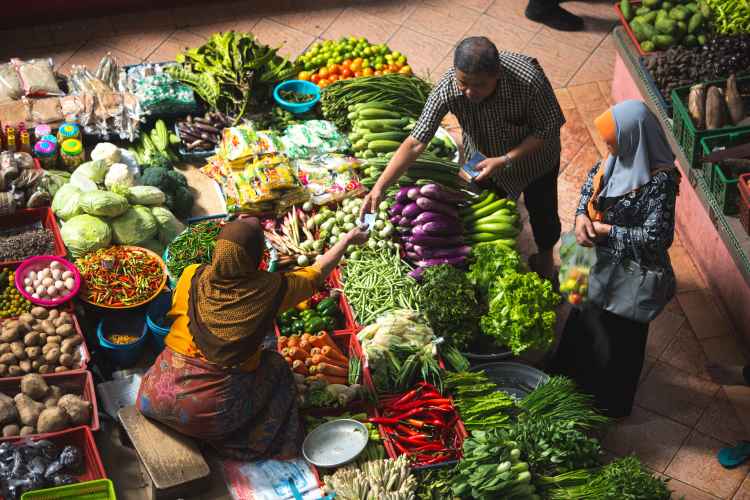Despite the Reserve Bank of India’s best efforts to control inflation, the country continues to grapple with high food prices. This has led the Reserve Bank of India’s Monetary Policy Committee to maintain the repo rate at 6.5% in the last four reviews. RBI Governor Shaktikanta Das recently emphasised India’s vulnerability to recurring food price shocks, saying the monetary policy will focus on aligning inflation with the 4% target while supporting economic growth.
India’s susceptibility to food inflation stems from being an agriculture-centric economy amid global macroeconomic and geopolitical upheavals. These global shocks, exacerbated by conflicts such as the Ukraine-Russia war and tensions in West Asia, directly impact food prices worldwide. Contributing factors include fluctuations in agricultural output, limited access to modern farming techniques, and reliance on increasingly erratic rainfall. Additionally, inefficiencies and waste in India’s food supply chain result in elevated consumer prices.
READ | Explained: The nexus of monetary policy, inflation, and economic growth
The World Bank highlights that food price shocks triggered by potential escalations in ongoing conflicts are a global concern. Sustained high oil prices would further drive up food costs. With over 700 million people globally undernourished at the end of 2022, escalating conflicts could worsen global food insecurity. Rising crude oil prices and potential spikes in essential food items could amplify inflationary pressures.
What causes high food inflation in India?
India’s food inflation is also driven by demand and supply dynamics. India has a growing population with rising incomes, which is increasing the demand for food. At the same time, India’s agricultural output is facing challenges due to climate change, erratic rainfall, and limited access to modern farming equipment. This has led to a mismatch between demand and supply, which is contributing to food inflation.
Another factor contributing to India’s food inflation is inefficiencies and waste in the food supply chain. According to the World Bank, India loses about 40% of its food produce due to post-harvest losses. This is due to factors such as poor storage facilities, inadequate transportation infrastructure, and lack of processing units. These inefficiencies lead to higher food prices for consumers.
India is also vulnerable to food inflation due to its reliance on imports of certain essential food items, such as edible oils and pulses. The global prices of these commodities can be affected by factors such as weather conditions, crop production in other countries, and geopolitical tensions. For example, the ongoing Ukraine-Russia war has led to higher prices of edible oils and wheat. This has contributed to food inflation in India.
India’s struggle to curb food inflation
India has experienced periodic increases in prices of staples like tomatoes, onions, milk, cereals, and pulses since the beginning of the year. Despite a drop in retail inflation to 5.02% in September, sporadic price surges remain a challenge. Notably, tomato prices surpassed Rs 300 per kg in some regions in 2023, and onion prices jumped 70-100% despite government interventions. These persistent high prices, especially of cereals and pulses, disrupt household budgets, particularly affecting lower-income families.
Addressing these food price shocks requires effective government strategies to manage production shortfalls. For example, maintaining and utilising buffer stocks of tomatoes can mitigate price spikes. Without enhanced storage for buffer stocks, India faces ongoing inflation challenges.
The World Bank advises developing countries to prepare for potential headline inflation increases due to ongoing conflicts. Regions prone to food insecurity need support, while resource-rich governments should avoid trade restrictions like export bans on food and fertilizers, which can exacerbate price volatility and food insecurity. In response to rising food and oil prices, the World Bank discourages price controls and subsidies, recommending improved social safety nets, diversified food sources, and increased efficiency in food production and trade instead.
The RBI’s latest Monetary Policy Committee meeting projects CPI inflation at 5.4% for 2023-24, a decrease from 6.7% in the previous year. However, food price inflation remains a concern, keeping headline inflation vulnerable. Core inflation has seen a 170 basis point drop since its peak in January. The RBI’s monetary policy continues to be vigilant and disinflationary.
The government has implemented a number of policies to try to control food inflation. These include maintaining and utilising buffer stocks of essential food items, providing subsidies to farmers and consumers, and imposing import duties on certain food items to protect domestic producers. However, these policies have had limited success in controlling food inflation.
To address India’s vulnerability to food inflation, the government needs to focus on increasing agricultural productivity through investment in research and development, irrigation, and modern farming equipment. It needs to reduce supply chain inefficiencies by improving storage and transportation facilities, and developing processing units. It should also diversify food sources by promoting the cultivation of non-staple crops, and strengthen social safety nets to protect vulnerable populations from the impact of food price shocks.

